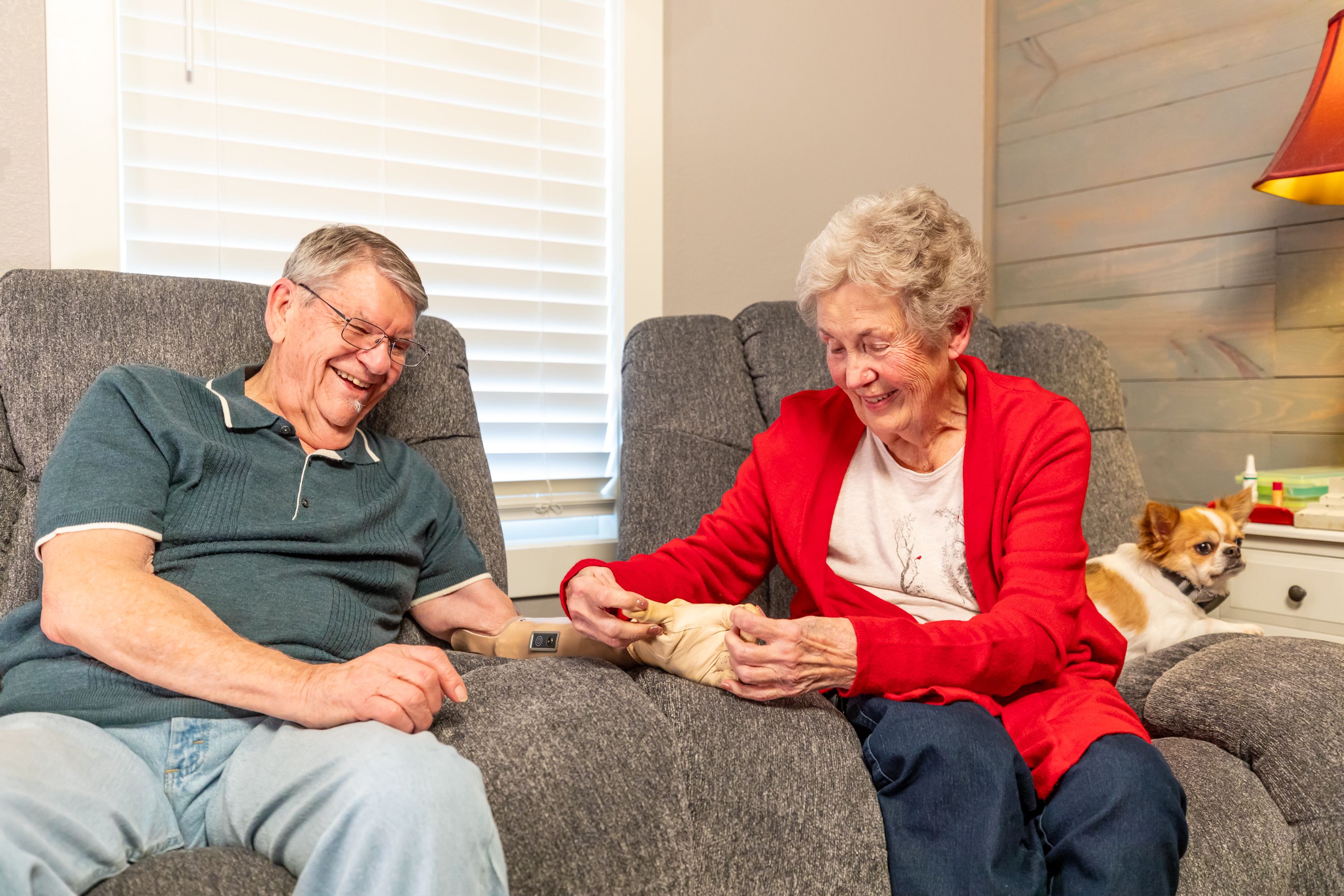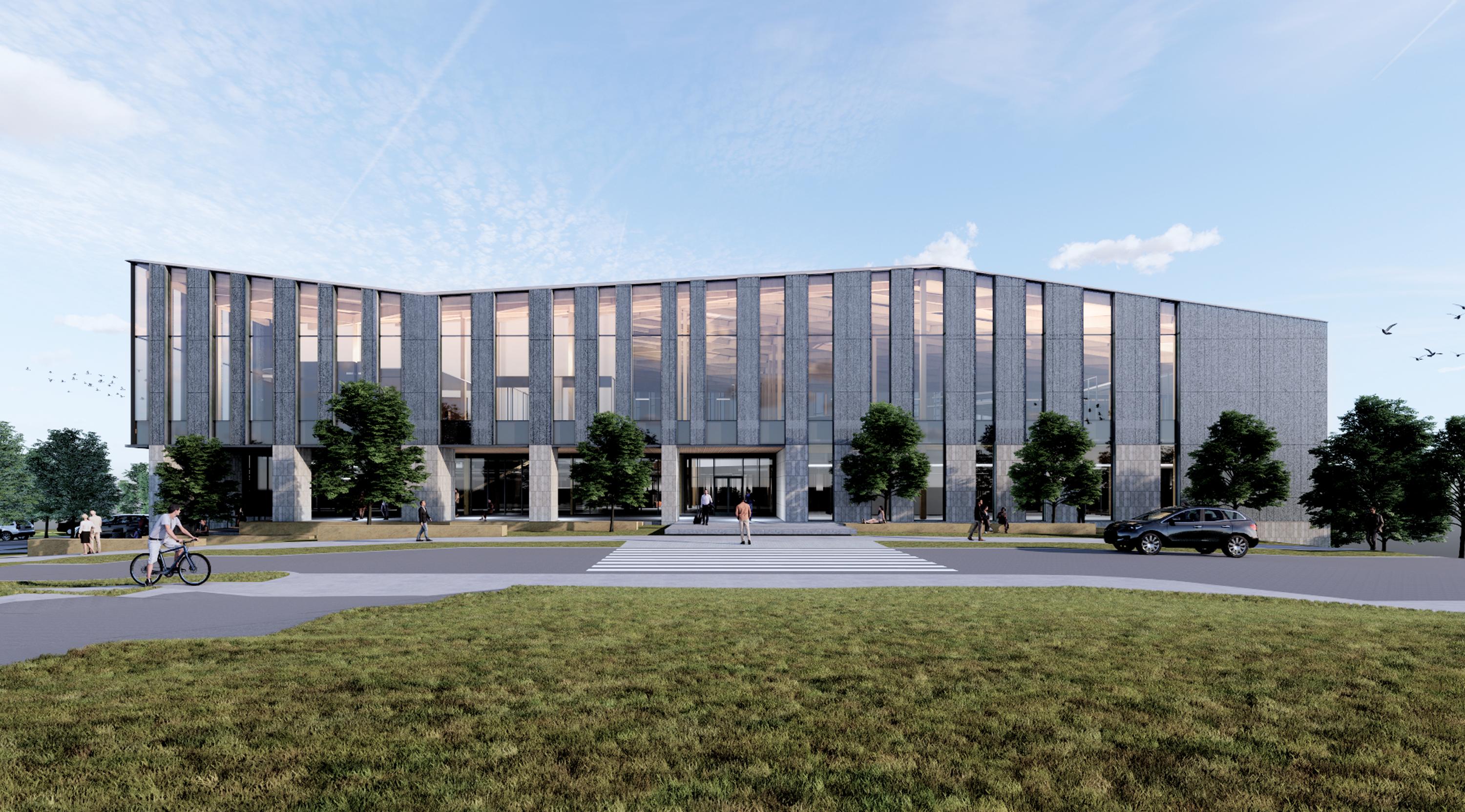The Power of Touch: Delivering Feeling from Artificial Limbs
University of Arkansas researchers are restoring a sense of touch…and hope.

More than 60 years after Dewey Hickey lost his arm, a new neural-enabled prosthetic hand system is restoring his sense of touch and is giving him a renewed sense of hope.

BREAKTHROUGH ADVANCEMENT
Hickey was in the fourth grade when he broke his arm in a bicycle accident. What doctors didn’t realize was that a piece of bone fragment also cut a nerve.
“My left arm deteriorated while it was in the cast to the point that there was nothing left,” Hickey explains. “The tendons, the blood supply, the muscle, everything in the front of my arm was gone. And so, I wound up with a crippled hand at 10 years of age.”
Fourteen years after his accident, Hickey had his hand amputated and has used a series of prosthetics since then.
The one he utilizes now is not comparable to any of the prosthetics he’s used in the past. The neural-enabled prosthetic hand system has the potential to restore a meaningful sense of touch and grip force to individuals with an upper limb amputation.
This innovative investigational device was pioneered by researchers at the University of Arkansas’ Institute for Integrative and Innovative Research (I³R) and approved by the Food and Drug Administration for investigation.

FEELING IS BELIEVING
“The hand is gone, but the nerves are still there,” explains James Abbas, professor of biomedical engineering with I³R and principal investigator. “And if we stimulate those nerves, that information goes up to the brain the same way it used to, and the person feels it as if it’s coming from their fingertips.”
To prepare Hickey for his new neuroprosthetic system, a team of surgeons from the University of Arkansas for Medical Sciences (UAMS), trained by the I³R team on the specific surgical technique, implanted 15 microelectrodes into the nerves of his arm to help facilitate communication with the prosthesis.
Through the ongoing clinical trial, the prosthesis project aims to impact not only the person’s physical capabilities but also their emotional and mental well-being. “When you lose an upper limb, you might get a prosthesis that allows you to hold and move things, but you don’t feel anything,” says Ranu Jung, U of A associate vice chancellor, founding executive director of I³R, and distinguished professor of biomedical engineering.
“Imagine being able to touch and feel something—the emotion you get from holding a loved one’s hand, touching a child’s face or sensing the texture of an object. Touch and feeling are how we connect to and engage with our environment. It gives us emotional satisfaction and also impacts our mental health,” Jung adds.
Since trying his prosthetic at home, Hickey has been able to use it for household tasks like cooking, professional interactions as a pastor at his church and – his favorite pastime – fishing. Perhaps most importantly, he can also now feel his wife’s hand.
“I’m extremely grateful,” Hickey says of his opportunity to participate in the study. “There’s no way to describe what it’s like to feel something when you haven’t felt it for more than 60 years.”
Hickey is the first Arkansan and only the second person in the world to receive the novel prosthetic device.

LIFE-CHANGING OPPORTUNITIES
As I³R’s clinical trial progresses, so too does interest in the expansion of the project. In addition to its collaboration with UAMS, Walter Reed National Military Medical Center will now be used as a second site for the clinical trial and expands it to U.S. service members and their dependents.
“The University of Arkansas is at the forefront of research that changes lives,” said Chancellor Charles Robinson. “Collaborating with partners like Walter Reed National Military Medical Center brings Arkansas innovation to a national stage, and in this case expands our services to those who have served and sacrificed for our country.”

HOME ON THE HILL
In late 2024, the institute will move to a new state-of-the-art facility at the heart of the University of Arkansas campus. The 144,000-square-foot building will house leading-edge technology, laboratory space and research equipment, including a state-of-the-art 3T MRI scanner, only the fourth in the country and 12th in the world.
I³R’s research advancements are just one example of the impactful research and economic development projects taking place at the U of A.
Learn more about how the University of Arkansas is determined to find ways to improve lives, build stronger communities and build a better world through Research and Economic Development: Discover RED.
The University of Arkansas and The Institute for Integrative and Innovative Research thank clinical trial participants, such as Mr. Hickey, for their role in advancing innovation and industry partners, such as Cochlear, TASKA Prosthetics, Fillauer, LLC, and Snell Prosthetics & Orthotics, whose expertise is integral to innovating safe, reliable, deployable medical technologies.
Research supported by the U.S. National Institute of Biomedical Imaging and Bioengineering (NIBIB; R01 EB023261) and U.S. Army Joint Warfighter Medical Research Program (W81WXH1910839) to Principal Investigators Profs. James Abbas and Ranu Jung.
This content was paid for and created by The University of Arkansas. The editorial staff of The Chronicle had no role in its preparation. Find out more about paid content.




